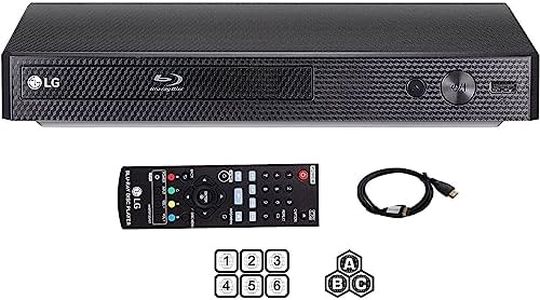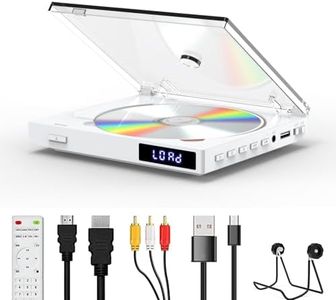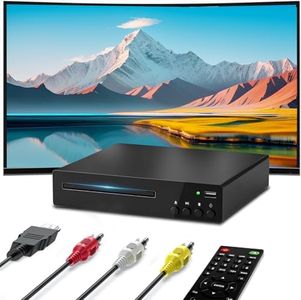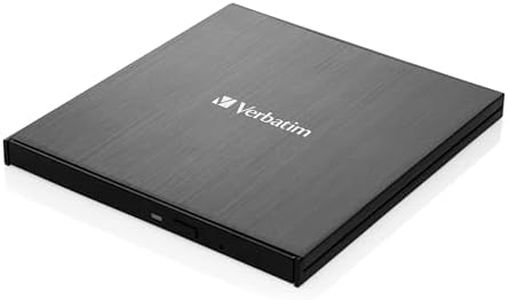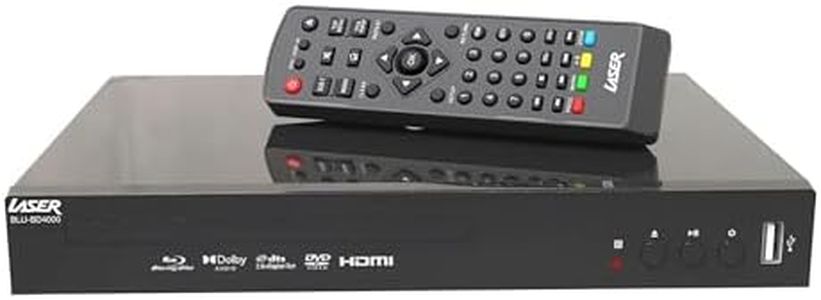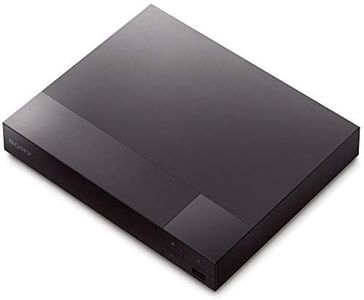We Use CookiesWe use cookies to enhance the security, performance,
functionality and for analytical and promotional activities. By continuing to browse this site you
are agreeing to our privacy policy
10 Best DVD Players
From leading brands and best sellers available on the web.By clicking on a link to a third party's website, log data is shared with that third party.
Buying Guide for the Best DVD Players
Picking the right DVD player is all about matching your entertainment needs and your viewing setup with the features a player offers. DVD players can seem very similar at first glance, but key differences matter depending on how and where you plan to use them. The right fit will play your discs smoothly, support your preferred media formats, and connect easily to your existing TV and sound system. Focusing on the main specifications will help you make a smart, satisfying choice.Disc CompatibilityDisc compatibility refers to the types of discs the DVD player can read, such as standard DVDs, DVD-R/RW, DVD+R/RW, and even CDs or VCDs. This is important because some people have collections in different disc formats, and not all players work with every kind. If you only watch standard DVDs, basic compatibility may be enough. For those who burn their own discs or receive home movies on other formats, making sure your player supports DVD-R/RW and DVD+R/RW is key. Consider your own collection; the more formats you want to play, the broader your compatibility needs.
Video Output ConnectionsVideo output connections are the ports the DVD player uses to send video to your television. The main types are HDMI, component, and composite outputs. HDMI offers the best quality and is the most common on newer TVs, while component and composite (the red, white, and yellow plugs) are found on older sets. Choose a DVD player that matches your TV’s inputs. If you have a recent HDTV, an HDMI-equipped player is ideal. For older televisions, make sure the player offers the matching connectors to ensure compatibility without adapters.
Upscaling CapabilityUpscaling capability is the player’s ability to convert standard DVD picture quality to near high-definition resolution, enhancing the viewing experience on HD and 4K TVs. Standard DVDs play at 480p, so upscaling helps them look crisper and more detailed on modern screens. If you have a high-definition television or projector, look for a player that includes upscaling—often called 1080p upscaling. If you’re watching mainly on older, non-HD TVs, this feature is not as important.
Supported File Formats via USBSome DVD players have a USB port allowing you to play digital files such as movies, music, or photos from a USB drive. The supported file formats (like MP4, AVI, MP3, JPEG) can vary between players. This feature is helpful if you occasionally watch digital content, not just physical discs. To pick the right DVD player, think about what kinds of files you have and check that the player supports them, so you can use your existing collection without hassle.
Audio Output OptionsAudio output options include stereo analog, digital optical, digital coaxial, or HDMI outputs, affecting how you send sound to a TV or audio system. If you want simple sound from the TV, any player will work. But if you use a surround sound receiver or a soundbar, check for digital outputs (optical or coaxial) or HDMI with audio support. Your choice should be guided by your current audio setup and how immersive you want your sound to be.
Region Code CompatibilityDVDs are coded by region, and many players only play discs sold for the region where the player was manufactured. This is important if you own or plan to buy DVDs from other countries. If your usage is all local, regional playback may not matter, but movie enthusiasts with international collections should look for a region-free or multi-region DVD player to ensure maximum compatibility.
Remote Control and Usability FeaturesUsability features include the simplicity of the remote control, on-screen menus, and convenience extras such as resume play or parental lock. If you want easy, hassle-free operation or have children using the player, these features can make everyday use much smoother. People with limited mobility or vision should look for larger remotes or basic controls, while others may prioritize advanced navigation functions.






